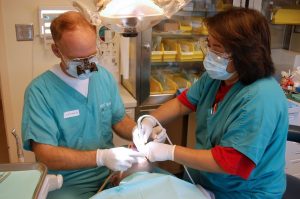Print a Sign-In Sheet | Spanish Version Coming Soon
Employees working in the healthcare industry are exposed to injury from strains and sprains associated with patient lifting and handling. Unfortunately, some of these injuries can be more serious resulting in disc herniations, torn muscles, and tendons. Therefore, it is imperative controls are put into place to help reduce the need for manual lifting. There are several devices available to assist in reducing a healthcare workers’ exposure to injury.
It is important to conduct a hazard assessment to pinpoint job tasks that may cause injury. Once those hazards are identified, put engineering and work practice controls in place. It is important to reduce the amount of manual lifting of patients as much as possible. This reduction in manual lifting can be done by providing employees with assisting devices and equipment. The proper equipment needed can depend on many factors such as the specific need of the patient, staff, or facility. Some equipment that may be helpful in reducing manual patient lifting are:
- Shower Chairs;
- Shower Stalls;
- Toilet Seat Risers;
- Mechanical Lift Equipment;
- Overhead Track Mounted Patient Lifters;
- Lateral Transfer Devices;
- Sliding Boards;
- Slip Sheets/Roller Sheets;
- Repositioning Devices;
- Height Adjustable Electric Beds;
- Trapeze Lifts;
- Walking Belts or Gait Belts;
- Wheelchairs with Removable Arms;
- Sitting-Standing Wheelchairs;
- Stair Chairs or Cots;
- Roll on Weight Scales; and
- Pivot Transfer Disk Devices.
Source:
United States Department of Labor. Occupational Safety & Health Administration. Hospital eTool. Healthcare Wide Hazards Ergonomics. Patient Handling Controls.
https://www.osha.gov/SLTC/etools/hospital/hazards/ergo/ergo.html#residenthandlinginjuries
KEMI does not assume liability for the content of information contained herein. Safety and health remain your responsibility. This information is to be used for informational purposes only and not intended to be exhaustive or a substitute for proper training, supervision or manufacturers’ instructions/recommendations. KEMI, by publication of this information, does not assume liability for damage or injury arising from reliance upon it. Compliance with this information is not a guarantee or warranty that you will be in conformity with any laws or regulations nor does it ensure the absolute safety of any person, place or object, including, but not limited to, you, your occupation, employees, customers or place of business.

